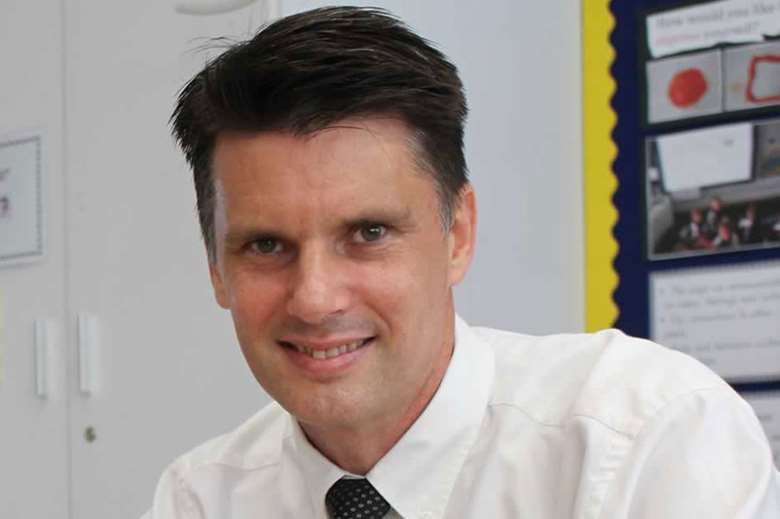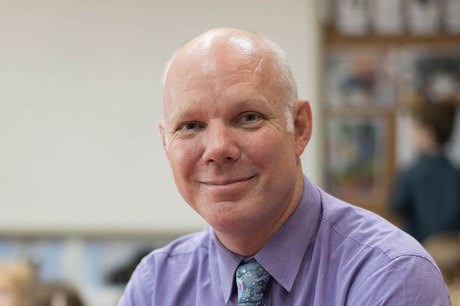Interview - Michael Day and Adam Patterson
Monday, September 18, 2017
Principals of the Early Learning Village, Singapore


Adam Patterson
Opened in July, the Village is the largest early years setting in the world with 2,100 places for children from 18 months to six years. Michael Day is principal of the Stamford American International School and Adam Patterson is principal of the Australian International School, the two schools based at the Village, which are both owned by Cognita Schools.
Opened in July, the Village is the largest early years setting in the world with 2,100 places for children from 18 months to six years.
Can you describe the school?
The Early Learning Village is spread across 50,000 square metres, over seven floors. There are multiple play decks (large outdoor areas with play structures and overhead cover) and more than 100 classrooms, which sounds big and huge and scary, but classrooms are clustered together in small groups and built around a pod, creating communities within the larger school community. Each cluster of four classrooms has a dedicated teaching kitchen and mini-library and resource centre. For the youngest children (18-24 months), the classroom clusters include nappy changing and sensory rooms.
Each classroom has an adjoining balcony space, which is accessed via a child-sized door, and is designed and contains play equipment tailored to the specific age of the children. This includes sandpits, water play, activity tables and building resources such as play bricks.?All classrooms are named after animals and the floors leading to these classes are marked in various colours with outlines of the animals. These help the children to remember which is their classroom as they move about each cluster.
The design of the Village is inspired by the Reggio Emilia philosophy. Children come in at level one, where children are met by lush green surroundings including ‘green walls’ full of plants. The next floor is the mezzanine level which has a shared a multi-purpose space called The Hive where PE lessons, including the smart steps program takes place. The mezzanine level also has flexible spaces with modular furniture that can be used by the children throughout the day, for example the Nursery class often take bed sheets down to make cubbies and play imaginative games.
On level two, we have classrooms, administrative offices, a library, health centre and a covered swimming pool. The pool is designed for the youngest children to learn to swim with different level platforms built into the pool to enable even the 18 month old children to learn to swim. The pool like the Hive is a shared facility. There are also classrooms on levels three, four, five, six and seven.
Other than the size of the Village, what makes it unique?
The Village has been built entirely with this age group in mind - the intent, from the child-height doors and windows, to the play spaces and the handrails on the stairs, has been for an 18 month - 6 years age range (it wouldn’t be possible to educate older children here without a major re-fit). It has also been built with Reggio Emilia principles at its heart.
The Village is also unique in that it is home to two distinct schools, Stamford American International School (SAIS) and the Australian International School (AIS). These two schools have different curriculums and academic calendars, and operate in separate parts of the building, sharing two core facilities - a purpose built young learners swimming pool and a multi-purpose sports hall, The Hive. The benefit of the collaboration is that the two schools can together provide students with facilities like these, which small schools could not possibly support.
We both follow the International Baccalaureate Primary Years Program (IBPYP) framework for children from three years of age and up, however we have slightly different flavours and aspects.
Stamford uses the IB Primary Years Program (PYP) (IBPYP) framework from age 3 and up. For 18 months to 2 year olds, the USA Creative Curriculum material is used. The curriculum from 18 months has interwoven throughout aspects of STEAMInn which stands for Science, Technology, Engineering, Arts, Mathematics and Innovation. Our teaching philosophy, similar to AIS draws from aspects of Reggio Emilia. Children’s progress is monitored closely by teachers using USA’s Gold Learning Standards so that important developmental milestones are recorded.
The Australian curriculum draws upon the principles of the Reggio Emilia philosophy, which places the child at the centre of learning experience and values the environment in which they learn as the ‘third teacher’. This is underpinned by the Australian Early Years Learning Framework. The inquiry-based Primary Years Programme is also introduced from three years.
The Early Learning Village is very diverse with over 50 different nationalities in the Australian school, and over 60 in the American school.
What activities are available for children?
Activities across the schools include swimming, ballet - both from 18 months old, languages, drama, gymnastics, soccer, construction club, creative drawing, storytelling, football and robotics. Robotics (from age three) is a really interesting activity, in which children make and programme robots.
In the Stamford American school, children from the age of three, take part in weekly Suzuki violin lessons. The world-renowned Suzuki programme is taught by specialist Suzuki trained violin teachers. The Suzuki method is not only about learning an instrument, but is also an important way we develop children’s character. In the Australian school, we offer the Orff Music Literacy Program for children from 18 months old. The Orff approach combines music, movement, drama and speech into play-based learning, and is the basis of music learning as the children progress through the older year levels of the school.
What level of qualification do teaching staff hold?
We recruit very carefully here and attract the very best teachers from across the world. We have teachers from the US, UK, Canada, Australia, Europe and many other countries. Many of our teachers are qualified to Masters level, but this isn’t a pre-requisite. We look for the strongest teachers. We find a lot of people want to come and work here.
Both schools operate to similar ratios. With the youngest children, we operate at a ratio of around three adults: 15 children – this includes one teacher and two teaching assistants. For three and four-year-olds, we operate to a staff: child ratio of 3:21, and for the five-six-year-olds, a ratio of 2:24.




